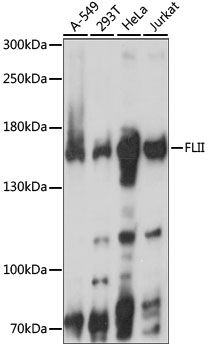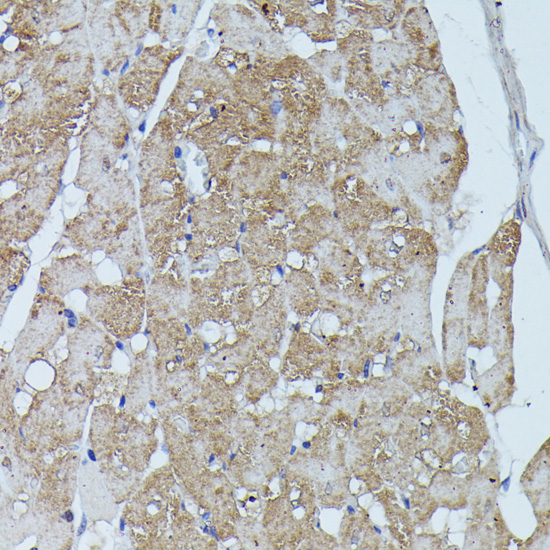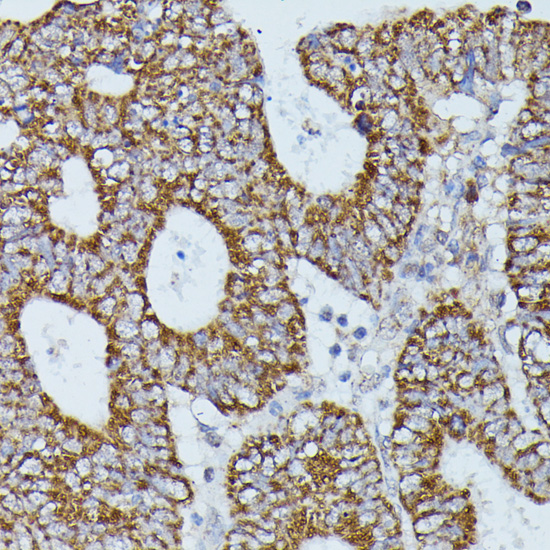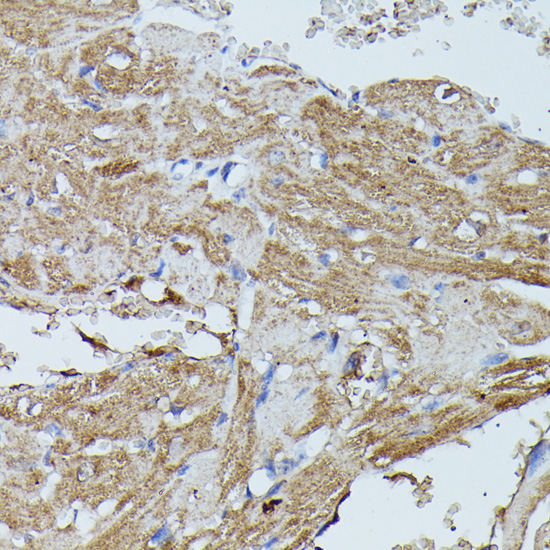-
Product Name
FLII Polyclonal Antibody
- Documents
-
Description
Polyclonal antibody to FLII
-
Tested applications
WB, IHC
-
Species reactivity
Human, Mouse, Rat
-
Alternative names
FLII antibody; FLI antibody; FLIL antibody; Fli1 antibody; protein flightless-1 homolog antibody
-
Isotype
Rabbit IgG
-
Preparation
Antigen: Recombinant fusion protein containing a sequence corresponding to amino acids 400-660 of human FLII (NP_002009.1).
-
Clonality
Polyclonal
-
Formulation
PBS with 0.02% sodium azide, 50% glycerol, pH7.3.
-
Storage instructions
Store at -20℃. Avoid freeze / thaw cycles.
-
Applications
WB 1:200 - 1:2000
IHC 1:50 - 1:200 -
Validations

Western blot - FLII Polyclonal Antibody
Western blot analysis of extracts of various cell lines, using FLII antibody at 1:1000 dilution.Secondary antibody: HRP Goat Anti-Rabbit IgG (H+L) at 1:10000 dilution.Lysates/proteins: 25ug per lane.Blocking buffer: 3% nonfat dry milk in TBST.Detection: ECL Basic Kit .Exposure time: 5S.

Immunohistochemistry - FLII Polyclonal Antibody
Immunohistochemistry of paraffin-embedded rat heart using FLII antibody at dilution of 1:100 (40x lens).

Immunohistochemistry - FLII Polyclonal Antibody
Immunohistochemistry of paraffin-embedded human colon carcinoma using FLII antibody at dilution of 1:100 (40x lens).

Immunohistochemistry - FLII Polyclonal Antibody
Immunohistochemistry of paraffin-embedded mouse heart using FLII antibody at dilution of 1:100 (40x lens).
-
Background
May play a role as coactivator in transcriptional activation by hormone-activated nuclear receptors (NR) and acts in cooperation with NCOA2 and CARM1. Involved in estrogen hormone signaling. Involved in early embryonic development (By similarity). May play a role in regulation of cytoskeletal rearrangements involved in cytokinesis and cell migration, by inhibiting Rac1-dependent paxillin phosphorylation.
Related Products / Services
Please note: All products are "FOR RESEARCH USE ONLY AND ARE NOT INTENDED FOR DIAGNOSTIC OR THERAPEUTIC USE"
